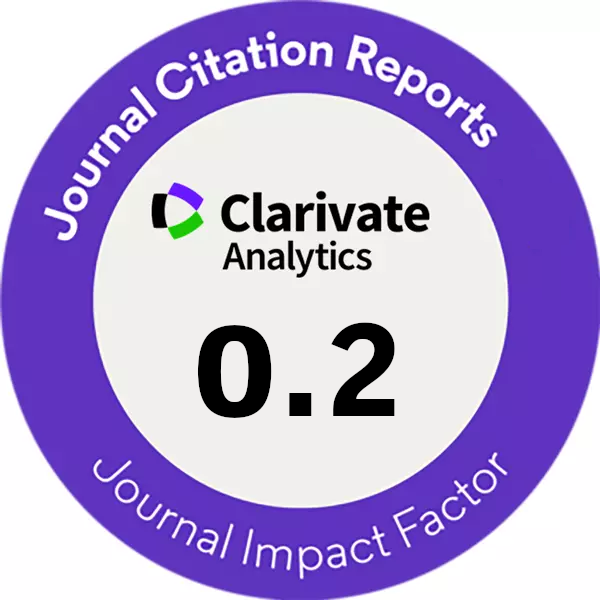Aplicability of Magnesium Phosphate Cement for Bioreceptive Concrete Tiles
DOI:
https://doi.org/10.14311/CEJ.2024.04.0034Keywords:
Bioreceptivity, Bio-active concrete, Low-pH cementitious material, Magnesium phosphate cement, PorosityAbstract
The pressing need for innovative green solutions in urban environments is evident. This study explores a novel concept of integrating green areas directly onto structural surfaces to enhance urban infrastructure with real floral life. Specifically, the research focuses on the application of newly developed bioreceptive concrete, which is engineered to promote the growth of microorganisms, including mosses, lichens, and algae, on its surface. To achieve optimal bioreceptivity, the concrete's properties were carefully modified by changing the mix design and using Magnesium Phosphate Cement instead of traditional Ordinary Portland Cement. This substitution resulted in a significant reduction in pH, creating a more favorable environment for the life of plants and microorganisms. Additionally, an optimal formulation was developed with a suitable grain size distribution to achieve the desired porosity, which is critical for water retention and microbial establishment. This bioreceptive concrete was tested as an additional layer on top of normal OPC concrete which was used to manufacture to the supporting structure. The concrete properties were carefully optimized to enhance bioreceptivity by altering the mix design and employing a different type of hydraulic binder to meet the conditions necessary for biological growth. The study primarily examines two key properties of bioreceptive concrete: pH and porosity.
Downloads
References
Growing Green Guide, A Guide to Green Roofs, Walls and Facades in Melbourne and Victoria, Australia. [online]. 2014 [cit. 2019-04-07].http://www.growinggreenguide.org/
Manso, M., Castro-Gomes, J., 2015. Green wall systems: A review of their characteristics. Renewable and Sustainable Energy Reviews, vol. 41, p.863-871. https://doi.org/10.1016/j.rser.2014.07.203
Perez G., Coma J., Martorell I., Cabeza L.F., 2014. Vertical Greenery Systems (VGS) for energy saving in buildings: A review. Renewable and Sustainable Energy Reviews, vol. 39, p. 140-141. ISSN 1364-0321, https://doi.org/10.1016/j.rser.2014.07.055
Giacomello E., Valagussa M., 2015. Vertical Greenery: Evaluating the High-Rise Vegetation of the Bosco Verticale, Milan, Council on Tall Buildings and Urban Habitat, Chicago, ISBN 978-0-939493-42-5.
https://en.wikipedia.org/wiki/CaixaForum_Madrid#/media/File:CaixaForum_Madrid_ (Espa%C3%B1a)_01.jpg
https://www.archiweb.cz/en/b/tower-flower
https://en.wikipedia.org/wiki/Bosco_Verticale#/media/File:Bosco_Verticale_Milano.jpg
GhaffarianHoseini A., Dahlan N., Berardi U., GhaffarianHoseini A., Makaremi N., GhaffarianHoseini M., 2013. Sustainable energy performances of green buildings: A review of current theories, implementations and challenges. Renewable and Sustainable Energy Reviews, vol. 25, p.1-17. ISSN 1364-0321, https://doi.org/10.1016/j.rser.2013.01.010.
Ottelé M., 2011. The green building envelope: Vertical greening. Doctoral thesis. Technische Universiteit Delft. ISBN 9789090262178, http://resolver.tudelft.nl/uuid:1e38e393-ca5c-45af-a4fe-31496195b88d
Guillitte O., 1995. Bioreceptivity: a new concept for building ecology studies. Science of The Total Environment, vol. 167(1-3), p.215-220, ISSN 0048-9697, https://doi.org/10.1016/0048-9697(95)04582-L.
Miller A., Sanmartín P., Pereira-Pardo L., Dionísio A., Saiz-Jimenez C., Macedo M., Prieto B. 2012. Bioreceptivity of building stones: A review. Science of The Total Environment, vol. 426, p.1-12, ISSN 0048-9697, https://doi.org/10.1016/j.scitotenv.2012.03.026.
Bellinzoni A., Caneva G., Ricci S., 2003. Ecological trends in travertine colonisation by pioneer algae and plant communities. International Biodeterioration & Biodegradation, vol. 51(3), p.203-210, ISSN 0964-8305, https://doi.org/10.1016/S0964-8305(02)00172-5.
Walling S., Provis J., 2016. Magnesia-Based Cements: A Journey of 150 Years, and Cements for the Future?. Chemical Reviews, vol. 116(7), p.4170-4204, ISSN 0009-2665, https://doi.org/10.1021/acs.chemrev.5b00463.
Iyengar S., Al-Tabbaa A., 2008. Developmental Study of a Low-pH Magnesium Phosphate Cement for Environmental Applications. Environmental technology, vol. 28(12), p.1387-1401, ISSN 0959-3330, https://doi.org/10.1080/09593332808618899.
Feng H., Chen G., Gao D., Zhao, K., Zhang C., 2018. Mechanical Properties of Steel Fiber-Reinforced Magnesium Phosphate Cement Mortar. Advances in Civil Engineering, vol. 2018, p.1-11, , https://doi.org/10.1155/2018/3978318.
Yang Q., Zhu B., Zhang S., Wu X., 2000. Properties and applications of magnesia–phosphate cement mortar for rapid repair of concrete. Cement and Concrete Research, vol. 30(11), p.1807-1813, ISSN 0008-8846, https://doi.org/10.1016/S0008-8846(00)00419-1.
Yang N., Shi C., Yang J., Chang Y., 2014. Research Progresses in Magnesium Phosphate Cement-Based Materials. Journal of Materials in Civil Engineering , 26(10):04014071, ISSN 0899-1561, https://doi.org/10.1061/(ASCE)MT.1943-5533.0000971.
Li, R., Sun, J., 2014. Experimental study of magnesia and M/P ratio influencing properties of magnesium phosphate cement. Construction and Building Materials, vol. 65, p.177-183, ISSN 0950-0618, https://doi.org/10.1016/j.conbuildmat.2014.04.136.
Li, Y., Chen, B., 2013. Factors that affect the properties of magnesium phosphate cement. Construction and Building Materials, vol. 47, p.977-983, ISSN 0950-0618, https://doi.org/10.1016/j.conbuildmat.2013.05.103.
Manso S., De Muynck W., Segura I., Aguado A., Steppe K., Boon N., De Belie N., 2014. Bioreceptivity evaluation of cementitious materials designed to stimulate biological growth. Science of The Total Environment, vol. 481, p.232-241, ISSN 0048-9697, https://doi.org/10.1016/j.scitotenv.2014.02.059.
Husarčíková M., 2019. Bio-active concrete tile, Bachelor Thesis; Czech Technical University in Prague, http://hdl.handle.net/10467/84197
Yang Q.B., Wu X., 1999. Factors influencing properties of phosphate cement-based binder for rapid repair of concrete. Cement and Concrete Research, vol. 29, p. 389-396, ISSN 0008-8846, https://doi.org/10.1016/S0008-8846(98)00230-0.
Lian C., Zhuge Y., Beecham S., 2011. The relationship between porosity and strength for porous concrete. Construction and Building Materials, vol. 25(11), p.4294-4298, ISSN 0950-0618, https://doi.org/10.1016/j.conbuildmat.2011.05.005.
Husarčíková, M.; Štemberk, P.; Petřík, M.; Frantová, M. (2019) Bio-active concrete tile. In: Fibre Concrete 2019. Bristol: IOP Publishing Ltd, 2019. IOP Conference Series: Materials Science and Engineering. vol. 596. ISSN 1757-899X, https://doi.org/10.1088/1757-899X/596/1/012034.
Downloads
Published
Versions
- 2025-01-06 (2)
- 2024-12-31 (1)
Issue
Section
License
Copyright (c) 2024 Author

This work is licensed under a Creative Commons Attribution-NonCommercial 4.0 International License.
Authors who publish with this journal agree to the following terms:
- Authors retain copyright and grant the journal right of first publication with the work simultaneously licensed under a Creative Commons Attribution License that allows others to share the work with an acknowledgement of the work's authorship and initial publication in this journal.
- Authors are able to enter into separate, additional contractual arrangements for the non-exclusive distribution of the journal's published version of the work (e.g., post it to an institutional repository or publish it in a book), with an acknowledgement of its initial publication in this journal.
- Authors are permitted and encouraged to post their work online (e.g., in institutional repositories or on their website) prior to and during the submission process, as it can lead to productive exchanges, as well as earlier and greater citation of published work (See The Effect of Open Access).










